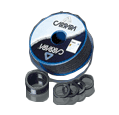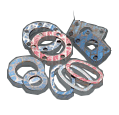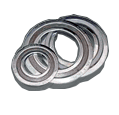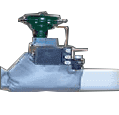You can have the most expensive equipment, the highest quality gaskets and the most skilled staff – but if your gasket compression isn’t effective, you’re going to run into some serious problems.
Leaks, equipment damage, safety hazards – these are all the risks of poor gasket compression.
Here, Steamline Engineering explains gasket compression and why it’s so important for businesses like yours.
What is gasket compression?
Gasket compression is the degree to which a gasket is compressed or squeezed between two mating surfaces, creating a seal. When properly compressed, a gasket fills any irregularities on the surfaces it seals, preventing the passage of fluids or gases. The compression of the gasket is typically achieved by tightening bolts or clamps that hold the flanges together.
Why is gasket compression so important?
Why is gasket compression such a big deal? Let’s explain:
- Maintains a tight seal
Gaskets are designed to seal the gap between two mating flanges. Compression plays a vital role in creating a tight, effective seal, preventing leaks. - Maintains pressure of application
Many applications that use gaskets require a strong, consistent pressure while in operation. Compression is also crucial for delivering this pressure by preventing leaks, which can cause pressure drops. - Prevents equipment damage
Leaks often result in equipment damage, either by harmful substances escaping and corroding the equipment, or by reducing the effectiveness of lubricants and coolants. - Maintains safety of equipment
Following on from this, using damaged equipment is a huge safety concern which could lead to an incident in your workplace – so gasket compression can directly impact workplace safety, too.
What factors influence effective gasket compression?
Want to ensure that your gaskets are providing effective compression at all times? Here’s what you need to consider:
- Gasket material
Different gasket materials possess varying levels of malleability which affects compression. For example, a rubber gasket is far more compressible than a metallic gasket, and might be more appropriate for your equipment (depending on the temperature, pressure and fluid used in your application). - Bolt torque
Bolt torque influences effective compression. If one bolt is torqued down more than another, the compression won’t be even. The bolts of your equipment should always be evenly tightened for effective compression. - Flange condition
Your gasket may be brand new and ready to go, but if your equipment’s flanges are worn or uneven, your gasket won’t be able to maintain effective compression. Always ensure your flanges are in great condition before installing a new gasket.
Got a question about gasket compression? Just ask the team at Steamline Engineering. No matter which type of gasket you’re after, Steamline Engineering has the right type of gasket for your application. We stock loads of gaskets from excellent manufacturers like Carrera and Firefly, providing metallic, rubber, PTFE, graphite gaskets and more. Supplying various gaskets from various materials, Steamline are also Australia’s leading team for other industrial equipment like thermal tapes and seals, welding blankets and valve packing materials.









